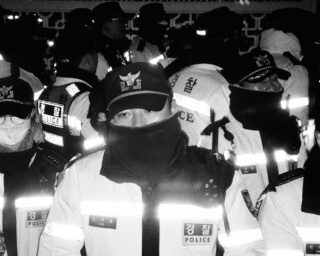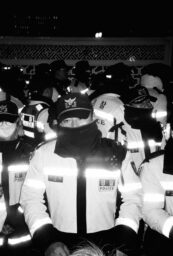Gordon Parks "Back to Fort Scott" Opens at MFA Boston
An exhibition of photographs by Gordon Parks at the Museum of Fine Arts, Boston, revisits a highly personal, yet never-published photo essay he developed for LIFE magazine in 1950. In 1948, LIFE assigned Parks, the magazine’s first African-American photographer to be hired full time, to do a story about segregation in American education. Parks centered on what happened to his former friends and classmates at the all-black grade school in Kansas he had attended. The results were intimate portraits of African-American families that had set out to cities across the Midwest—Chicago, Detroit, and Columbus, Ohio—as well as scenes of small-town life from where Parks grew up nearly twenty years prior. (The story, however, never ran, for reasons still unknown.) The premise lends the exhibition, which opens this Saturday, its title: “Back to Fort Scott.”
The idea for the exhibition developed when Lane Curator of Photographs Karen Haas realized that the date on a Parks photograph from the museum’s collection was probably incorrect. The image, of an African-American couple standing in front of a small suburban movie theater, was dated 1949, a time when Parks was working in New York City. The Gordon Parks Foundation clued Haas in that this photograph was part of the LIFE photo essay, and suggested the idea for a highly concentrated exhibition about the project. Haas made it her goal to piece it together from the written archives in Wichita, Kansas, and the photo archives at SUNY Purchase. “The challenge was matching the pictures which aren’t identified to the memos,” Haas explained. She tried to track down any family members in the images who might still be alive, and, with the addresses she found in the archives, went on a road trip to find out if any of the actual structures in the photographs remained. “We wanted to see what buildings were standing,” she said. “We were looking for any sign of what the houses looked like.” She described Parks’s project as “a sort of modeling after American Gothic. He had this idea he would photograph these people in front of their houses, not as people in dire straits.” But as Haas found out, none of the original homes remain, as demographics have shifted dramatically in the decades since the series was shot.
“My dream is that people will see their photographs, or photographs of friends and we may find some of these people and they’ll be able to tell their story,” Haas said. “That someone will come forward and say, ‘I’m that boy, or that little girl.’”
“Back to Fort Scott” runs through September 13 at the Museum of Fine Arts, Boston. A concurrent exhibition titled “Segregation Story” runs at the High Museum of Art, Atlanta, through June 7.























